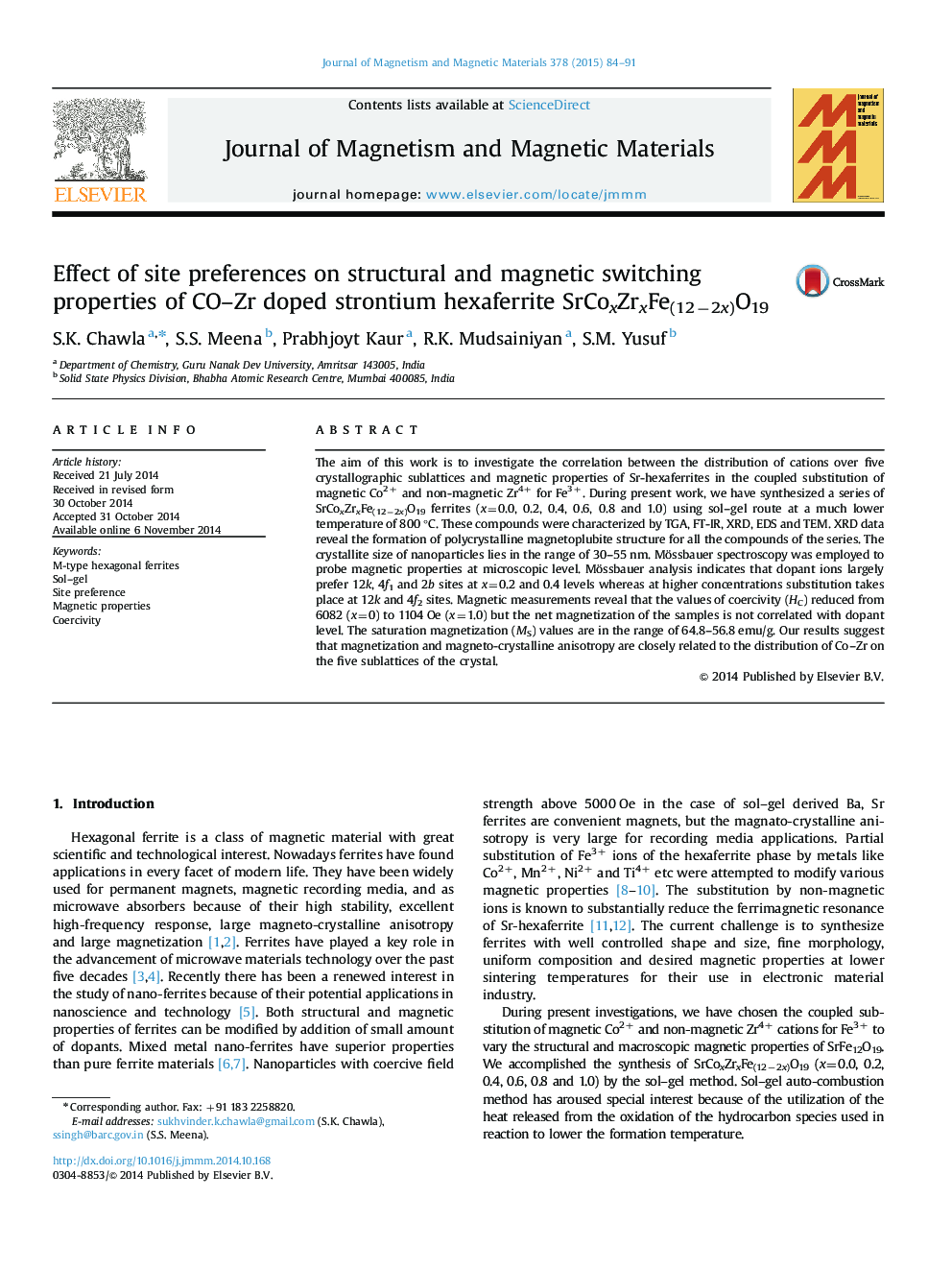| Article ID | Journal | Published Year | Pages | File Type |
|---|---|---|---|---|
| 1799289 | Journal of Magnetism and Magnetic Materials | 2015 | 8 Pages |
•Nanosized M-type SrCoxZrxFe(12-2x)O19 (x=0–1) hexaferrites have been synthesized via sol–gel method.•Mössbauer spectroscopy and M vs H results show that MS and HC are related to the distribution of dopant ions on the five sites.•The site preference depends upon the concentration of dopant ions.•The MS value first increases up to 0.4 level, remains nearly constant till 0.8 and then decreases at 1.0 dopant concentration level whereas HC shows stricking fall (6082−1104 Oe).
The aim of this work is to investigate the correlation between the distribution of cations over five crystallographic sublattices and magnetic properties of Sr-hexaferrites in the coupled substitution of magnetic Co2+ and non-magnetic Zr4+ for Fe3+. During present work, we have synthesized a series of SrCoxZrxFe(12−2x)O19 ferrites (x=0.0, 0.2, 0.4, 0.6, 0.8 and 1.0) using sol–gel route at a much lower temperature of 800 °C. These compounds were characterized by TGA, FT-IR, XRD, EDS and TEM. XRD data reveal the formation of polycrystalline magnetoplubite structure for all the compounds of the series. The crystallite size of nanoparticles lies in the range of 30–55 nm. Mössbauer spectroscopy was employed to probe magnetic properties at microscopic level. Mössbauer analysis indicates that dopant ions largely prefer 12k, 4f1 and 2b sites at x=0.2 and 0.4 levels whereas at higher concentrations substitution takes place at 12k and 4f2 sites. Magnetic measurements reveal that the values of coercivity (HC) reduced from 6082 (x=0) to 1104 Oe (x=1.0) but the net magnetization of the samples is not correlated with dopant level. The saturation magnetization (MS) values are in the range of 64.8–56.8 emu/g. Our results suggest that magnetization and magneto-crystalline anisotropy are closely related to the distribution of Co–Zr on the five sublattices of the crystal.
Graphical abstractFigure optionsDownload full-size imageDownload as PowerPoint slide
